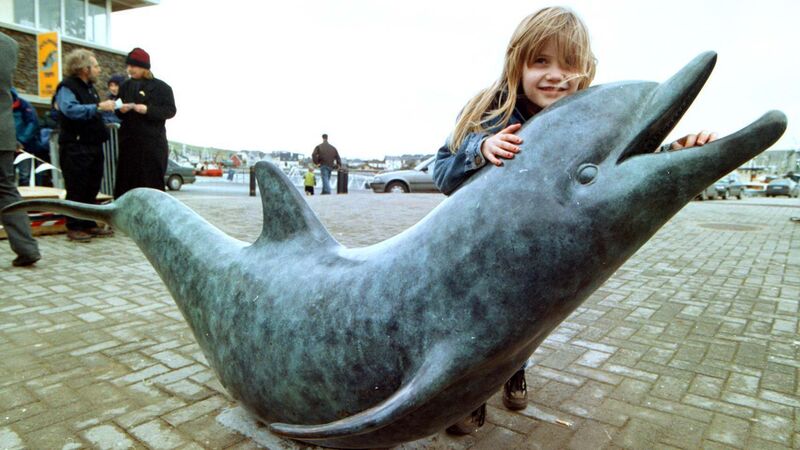Munster In 30 Artworks, No 8: Sculpture of Fungie in Dingle, by Bud Bottoms

Iveragh Counihan at the bronze statue of Fungie the dolphin, a day after its unveiling in Dingle in January 2000. Picture: MacMonagle, Killarney
For the best part of forty years, up to his disappearance in October 2020, Fungie the dolphin was arguably the most famous sea creature in the world.
Fungie first showed up in Dingle, Co Kerry in 1983, following the fishing-boats in and out of the harbour. A male common bottlenose dolphin, thirteen feet in length and weighing an estimated 500lb, he was a formidable presence, but seemed happy to play with those who dared enter the water to swim with him.







